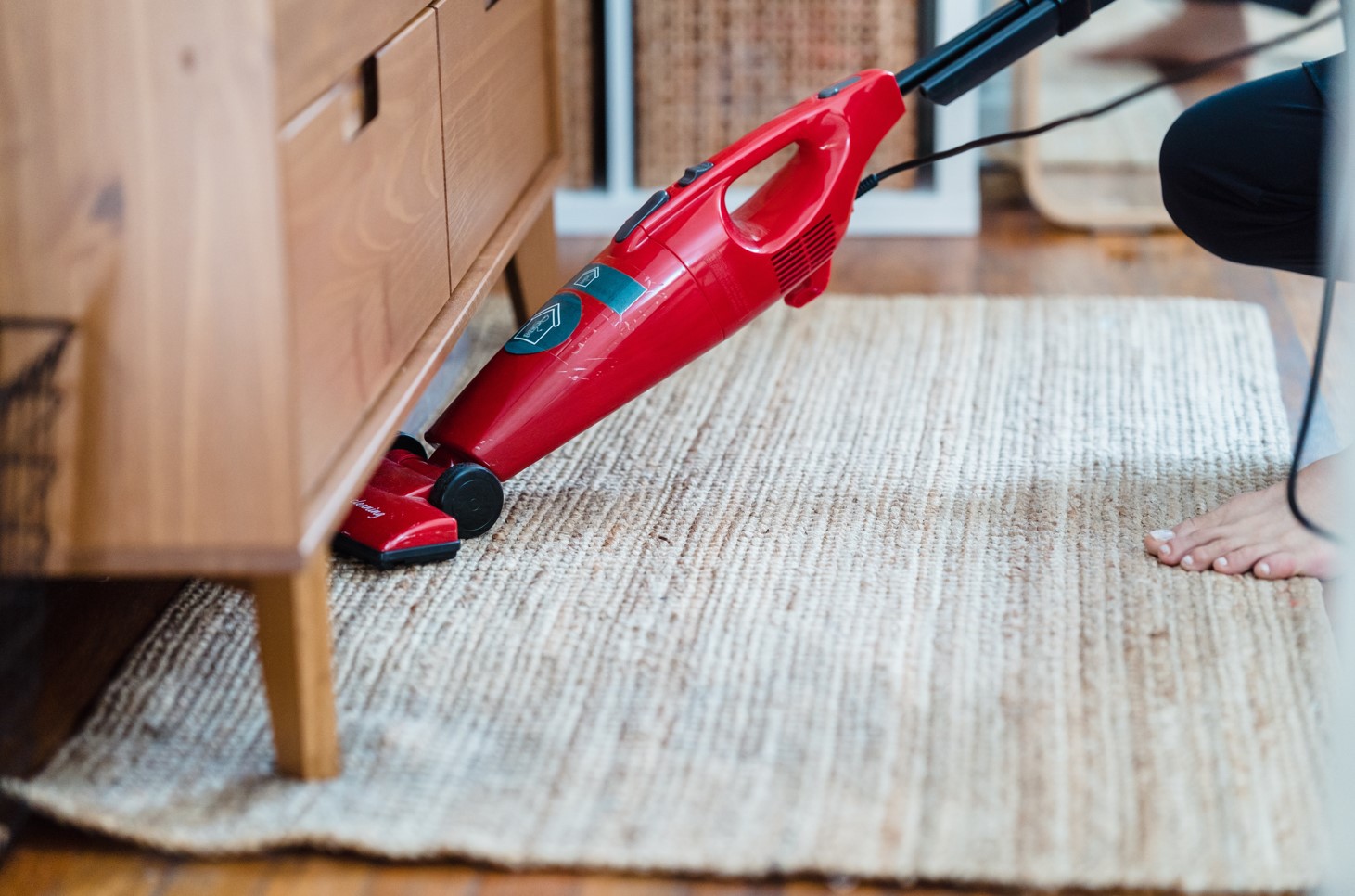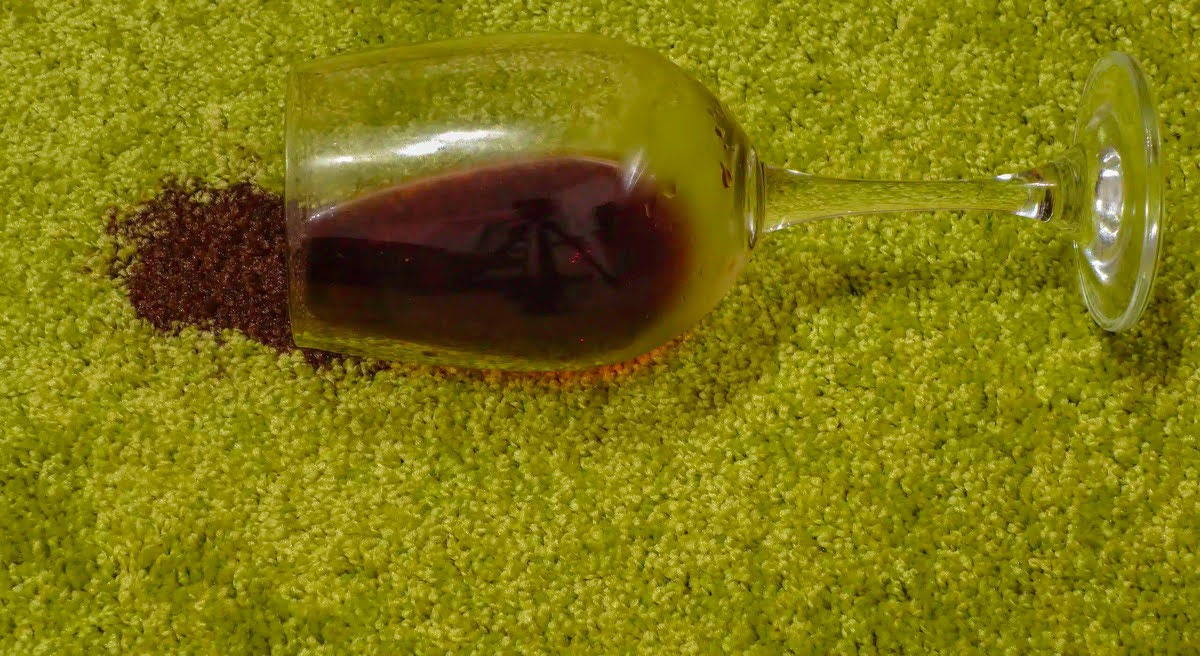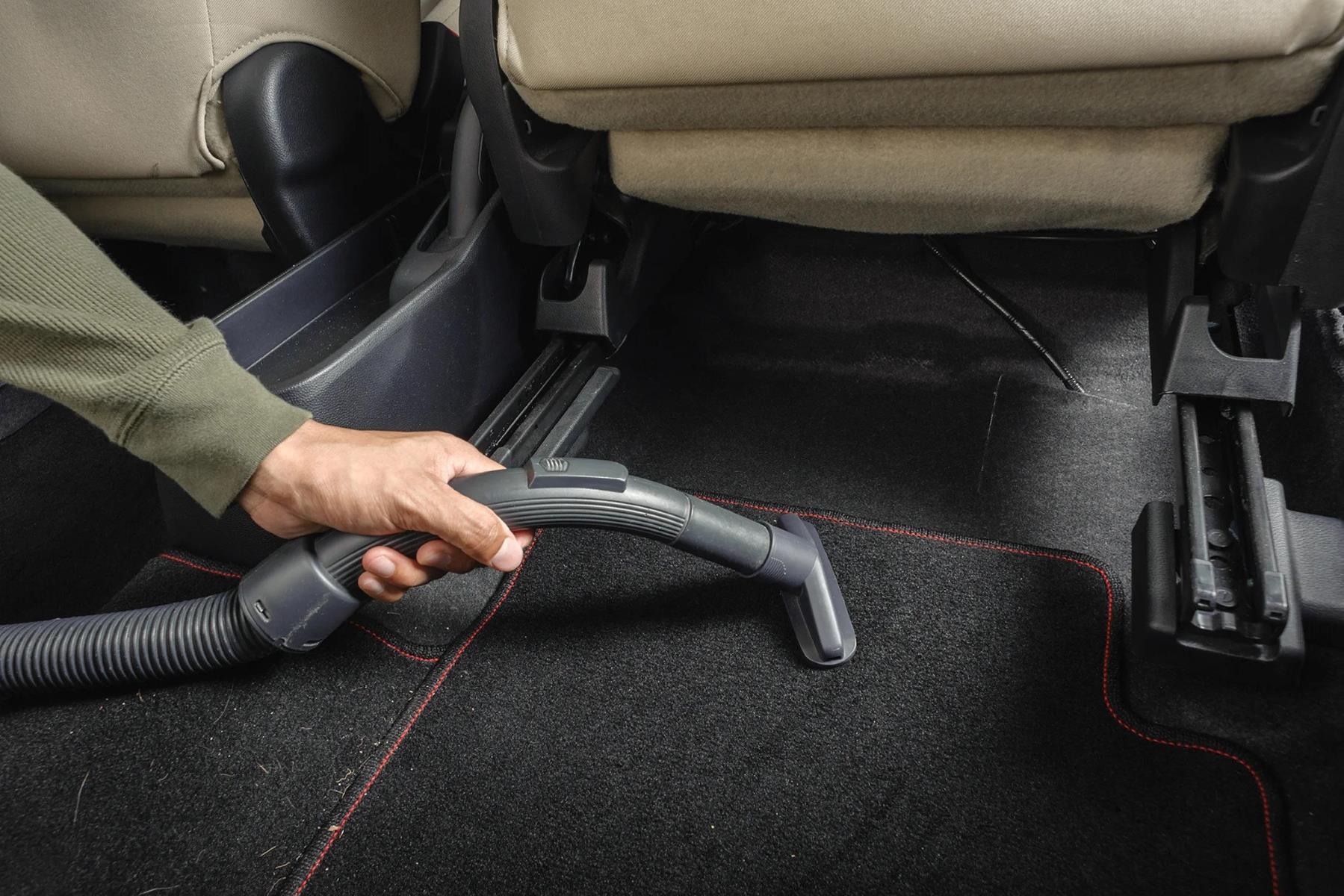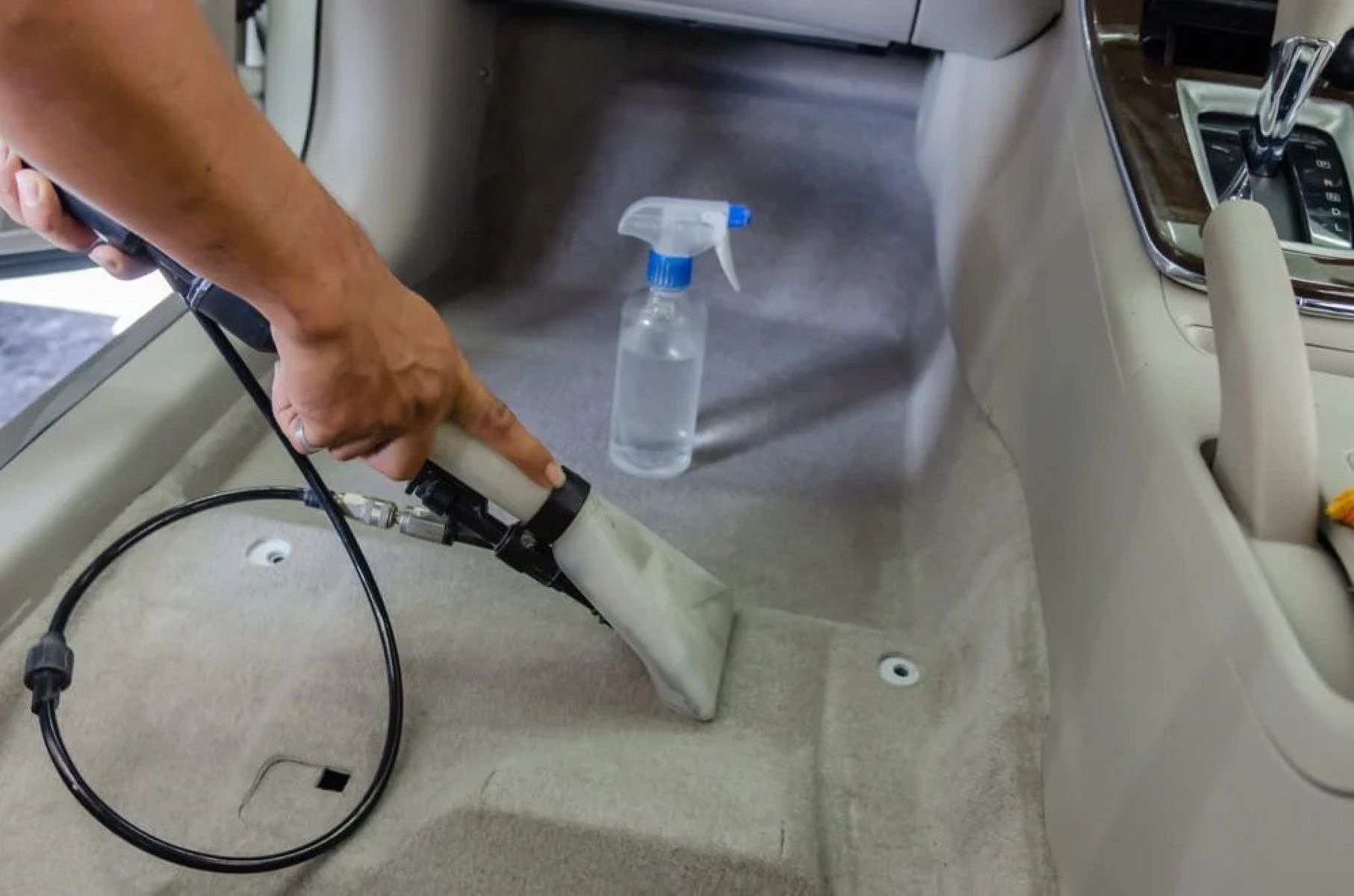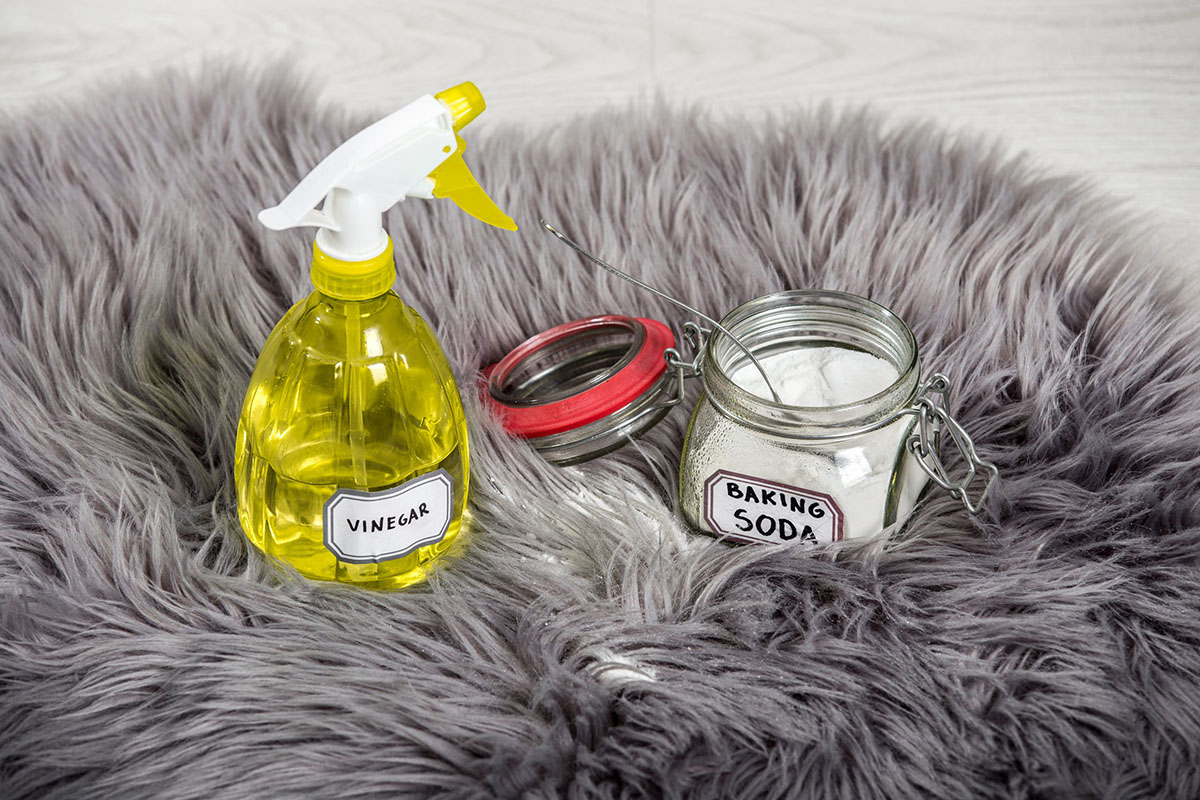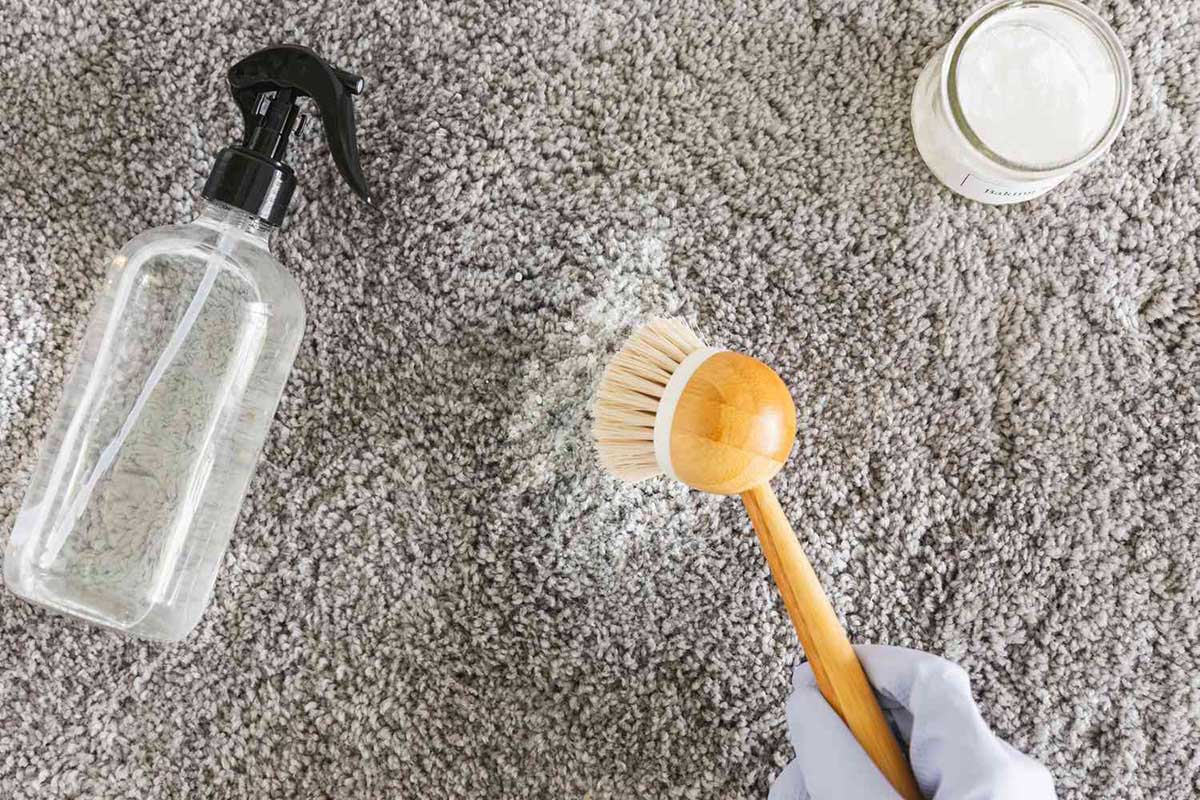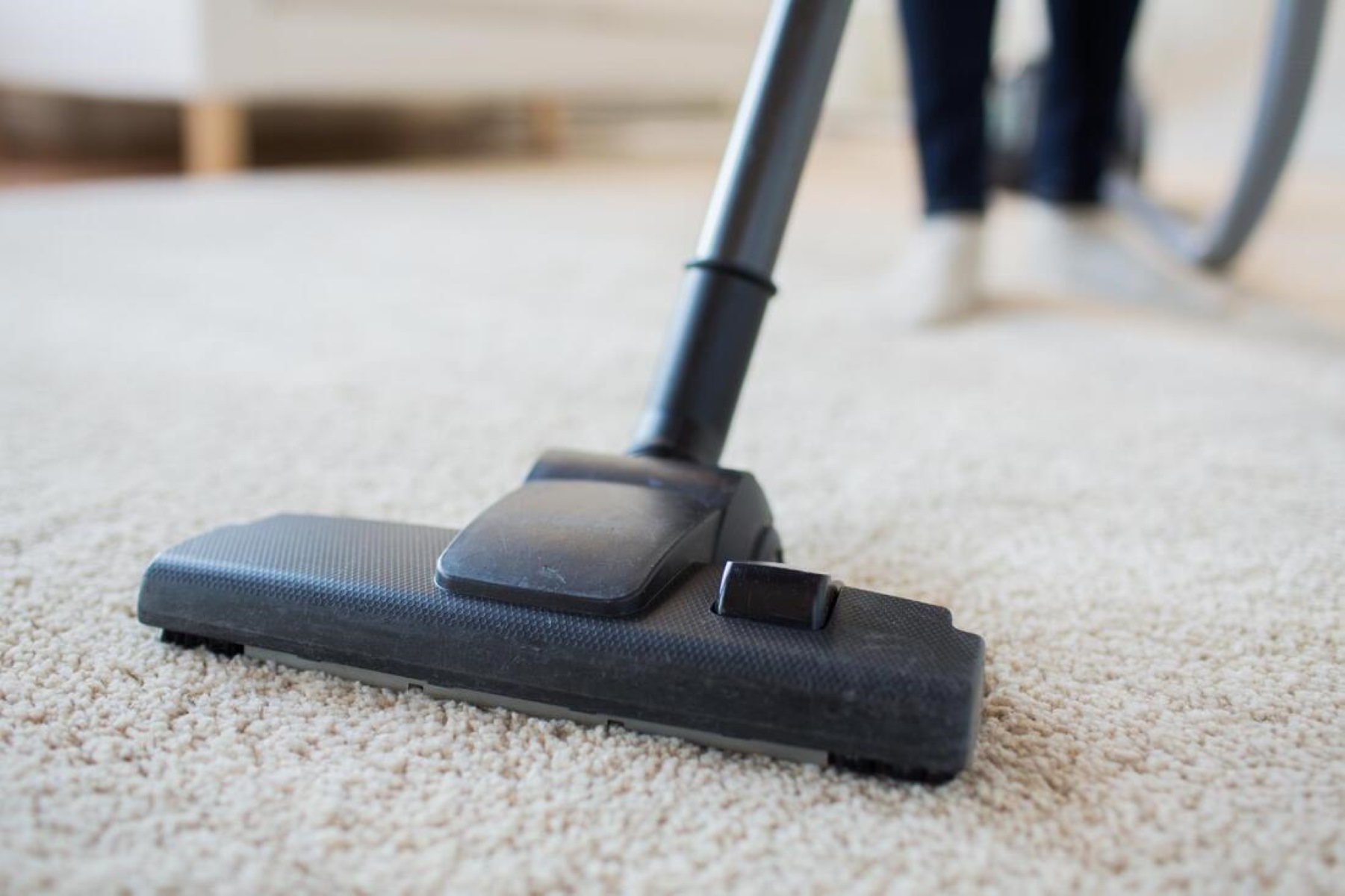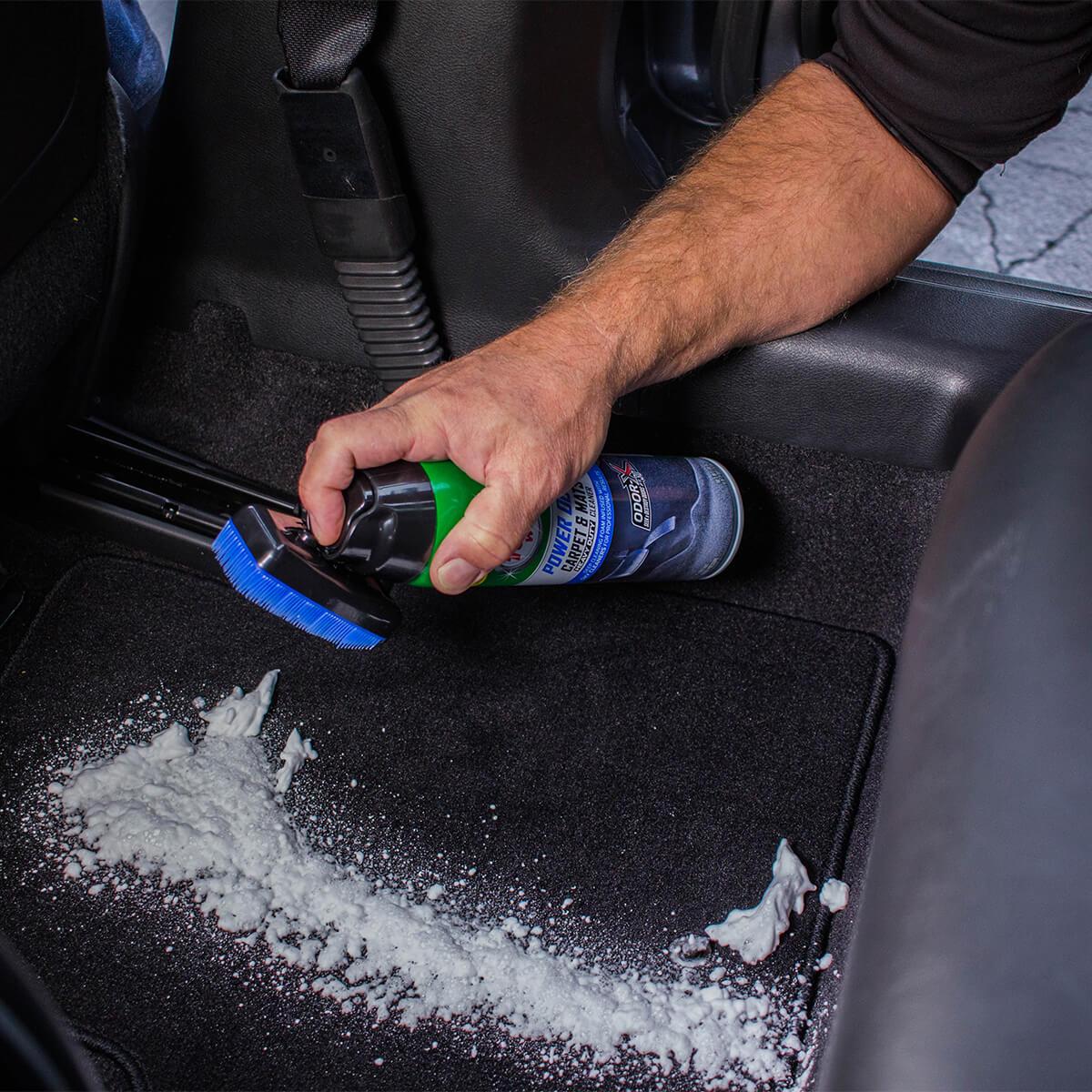

Articles
How To Get Bad Smell Out Of A Car Carpet
Modified: March 6, 2024
Discover effective ways to eliminate bad smells from your car carpet with these informative articles. Say goodbye to unpleasant odors and enjoy a fresh, clean ride.
(Many of the links in this article redirect to a specific reviewed product. Your purchase of these products through affiliate links helps to generate commission for Storables.com, at no extra cost. Learn more)
Introduction
There’s nothing worse than stepping into your car and being hit with a strong, unpleasant odor. Whether it’s the remnants of a spilled coffee, food crumbs that have accumulated over time, or just everyday wear and tear, a bad smell in your car can quickly turn a pleasant drive into an uncomfortable experience.
Fortunately, there are several effective methods to get rid of those stubborn odors and restore a fresh, clean scent to your car’s interior. In this article, we will explore different techniques and remedies to help you tackle even the most persistent smells trapped in your car carpet.
Before we delve into the specifics of odor removal, it’s important to understand what causes these unpleasant smells. Car carpets can easily absorb and retain odors due to their fabric composition and the fact that they are often exposed to various sources of smells, such as food, drink spills, pet accidents, and the dirt and grime that can be tracked into the vehicle.
Now, let’s get ready to banish those bad smells and leave your car smelling fresh and inviting again.
Key Takeaways:
- Say goodbye to bad smells in your car carpet by using simple household items like baking soda and vinegar. These natural remedies can effectively neutralize odors and leave your car smelling fresh and clean.
- Prevent stubborn odors in your car carpet by taking proactive measures like cleaning up spills immediately, using protective mats, and avoiding smoking in the car. Regular maintenance and cleanliness are key to a fresh and inviting car interior.
Read more: How To Get Wet Carpet Smell Out Of Car
Understanding the Causes of Bad Smells in Car Carpets
Before we move on to the methods of removing bad smells, it’s important to understand the common causes of these odors. By identifying the source, you can effectively target the problem and eliminate the unpleasant smell.
1. Food and Drink Spills: Perhaps the most common cause of bad smells in car carpets are food and drink spills. From coffee stains to dropped french fries, these substances can seep into the fibers of the carpet and leave behind a lingering odor.
2. Pet Accidents: If you’ve ever traveled with a furry friend, you know that accidents can happen. Urine, feces, and even pet odors can penetrate the car carpet and create an unpleasant smell that can be difficult to remove.
3. Moisture and Mold: Moist conditions, such as leaving the windows open during rain or snow, can lead to moisture buildup in the car carpet. This moisture can promote the growth of mold and mildew, resulting in a musty, foul smell.
4. Smoking: If you or previous passengers have smoked in the car, the smell of cigarettes can become ingrained in the carpet fibers. This odor is not only unpleasant but can also be challenging to eliminate.
5. General Dirt and Grime: Over time, dirt, dust, and other debris can accumulate in the car carpet. This accumulation, combined with foot traffic, can lead to a buildup of odors.
By understanding the causes of bad smells, you can take the necessary steps to address the specific source and effectively eliminate the odor. In the following sections, we’ll explore different methods and techniques to help you restore freshness to your car’s carpet.
Preparing to Remove Bad Smells
Before you begin the process of removing bad smells from your car carpet, it’s important to gather the necessary supplies and prepare the area. Taking a few moments to prep can make the odor removal process more efficient and effective.
1. Gather Supplies: Start by gathering the following supplies:
- Vacuum cleaner with attachments
- Baking soda
- Vinegar
- Enzymatic cleaner
- Steam cleaner (optional)
- Clean microfiber cloths
- Water
2. Remove Clutter: Before tackling the carpet, remove any items or debris that may hinder the cleaning process. This includes car mats, toys, trash, and other objects.
3. Check for Stains: Take note of any visible stains or heavily soiled areas on the carpet. These areas may require more targeted treatment during the odor removal process.
4. Ventilate the Area: If possible, open the car doors or windows to allow fresh air to circulate. This can help alleviate some of the odor and improve the overall air quality within the car.
5. Test on a Small Area: If you plan to use any cleaning solutions or products on your car carpet, it’s always a good idea to test them on a small, inconspicuous area first. This ensures that the solution won’t cause any discoloration or damage to the carpet fibers.
By preparing and gathering the necessary supplies, you’ll be ready to tackle the bad smells in your car carpet with confidence. In the following sections, we’ll explore different methods to remove those stubborn odors and restore freshness to your vehicle.
Vacuuming the Car Carpet
One of the first steps in removing bad smells from your car carpet is to thoroughly vacuum the entire area. Vacuuming helps to remove loose dirt, debris, and surface contaminants that may contribute to the unpleasant odor. Here’s how you can effectively vacuum your car carpet:
1. Use the Correct Attachments: Start by selecting the appropriate attachments for your vacuum cleaner. A crevice tool and upholstery brush attachment can help you reach into the tight corners and effectively clean the carpet fibers.
2. Remove Larger Debris: Before using the vacuum, manually remove any larger debris like food crumbs, leaves, or loose dirt that can clog the machine or become tangled in the carpet fibers.
3. Vacuum in Sections: Divide the car carpet into sections and work on one section at a time. This ensures thorough cleaning and prevents you from overlooking any areas.
4. Start from Top to Bottom: Begin vacuuming from the top of the car carpet, gradually working your way down towards the floor. This way, any dirt or debris that is dislodged from above will fall onto the already cleaned sections.
5. Pay Attention to Edges and Corners: Use the crevice tool attachment to clean the edges and corners of the carpet. These areas tend to accumulate more dirt and debris, which can contribute to bad smells.
6. Use Back-and-Forth and Circular Motions: When vacuuming the carpet, use a combination of back-and-forth and circular motions to ensure that you are lifting and removing as much dirt as possible. This technique helps to loosen embedded particles from the carpet fibers.
7. Repeat if Necessary: If the car carpet still smells after vacuuming, repeat the process to ensure that you’ve thoroughly removed all surface dirt and debris.
Vacuuming the car carpet is an essential first step in odor removal. By eliminating loose dirt and debris, you’re setting the foundation for the subsequent odor elimination methods to be more effective. In the next section, we’ll explore the use of baking soda to neutralize odors in your car carpet.
Using Baking Soda to Neutralize Odors
Baking soda is a versatile and inexpensive household ingredient that can work wonders in neutralizing odors, including those trapped in your car carpet. Its natural deodorizing properties help to absorb and eliminate unpleasant smells. Follow these steps to use baking soda effectively:
1. Sprinkle Baking Soda: Start by generously sprinkling baking soda over the entire car carpet. Make sure to cover the entire surface, including any stained or heavily soiled areas.
2. Let It Sit: Allow the baking soda to sit on the carpet for at least 30 minutes. This gives it time to absorb and neutralize the odors effectively.
3. Work It In: Use a clean, dry brush or broom to gently work the baking soda into the carpet fibers. This helps to ensure that the baking soda reaches deeper layers of the carpet and maximizes its odor-absorbing properties.
4. Leave Overnight (Optional): For more stubborn or persistent odors, you can leave the baking soda on the carpet overnight. This extended contact time allows the baking soda to work its magic and combat the smells more effectively.
5. Vacuum Thoroughly: After the desired amount of time has passed, thoroughly vacuum the car carpet to remove the baking soda. Use the upholstery brush attachment to agitate the carpet fibers and ensure that all the baking soda is lifted from the carpet.
6. Repeat if Needed: For particularly stubborn odors, you may need to repeat the process of applying and vacuuming baking soda multiple times to fully eliminate the smell.
Baking soda is not only effective at neutralizing odors but also safe to use in your car. Its gentle nature won’t harm the carpet fibers or leave any residue. If the bad smell persists, we will explore another method in the following section: applying a vinegar solution to eliminate smells.
Read more: How To Get Gas Smell Out Of Carpet In Car
Applying Vinegar Solution to Eliminate Smells
Vinegar is a natural, multipurpose household ingredient that can be highly effective in eliminating bad odors, including those in your car carpet. Its acidic properties help break down and neutralize odor-causing bacteria. Follow these steps to apply a vinegar solution for odor removal:
1. Create a Vinegar Solution: Mix equal parts of white vinegar and water in a spray bottle. For example, combine 1 cup of vinegar with 1 cup of water. This solution is mild enough to be safe for most car carpets while still being effective against odors.
2. Test on a Small Area: Before applying the vinegar solution to the entire carpet, test it on a small, inconspicuous area to ensure that it doesn’t cause any discoloration or damage to the carpet fibers.
3. Spray the Solution: Spray the vinegar solution directly onto the car carpet, focusing on areas with visible stains or strong odors. Be careful not to oversaturate the carpet.
4. Work the Solution: Use a clean, damp cloth or soft-bristle brush to work the vinegar solution into the carpet fibers. This helps to penetrate deeper layers and break down any remaining odor-causing particles.
5. Let It Sit: Allow the vinegar solution to sit for about 15-20 minutes. This gives it time to break down and neutralize the odors effectively.
6. Blot with a Clean Cloth: After the desired amount of time has passed, use a clean, absorbent cloth to blot the carpet and absorb any excess moisture and vinegar solution. Repeat this process until the carpet feels damp but not overly wet.
7. Let It Air Dry: Allow the treated carpet to air dry completely before using the car again. It’s best to park the vehicle in a well-ventilated area to speed up the drying process and prevent the growth of mold or mildew.
Vinegar is known for its strong smell, but don’t worry; the vinegar scent will dissipate as the carpet dries, leaving behind a clean and fresh-smelling car interior. If the odor persists, our next method involves using enzymatic cleaners to tackle stubborn smells in your car carpet.
To get bad smell out of a car carpet, sprinkle baking soda on the affected area, let it sit for a few hours, then vacuum it up. Repeat if necessary.
Using Enzymatic Cleaners for Stubborn Odors
If you’re dealing with stubborn odors in your car carpet that have proven resistant to other methods, enzymatic cleaners can be a highly effective solution. Enzymatic cleaners work by breaking down odor-causing substances at a molecular level, targeting the source of the smell. Here’s how you can use enzymatic cleaners to tackle stubborn odors:
1. Choose an Enzymatic Cleaner: Look for a commercial enzymatic cleaner specifically formulated for carpet and upholstery. These cleaners contain specialized enzymes that can effectively break down organic materials, such as food residues, pet accidents, and more.
2. Read the Instructions: Before using the enzymatic cleaner, carefully read and follow the instructions provided by the manufacturer. Different products may have variations in dilution ratios and application methods.
3. Pretest on a Small Area: Just like with other cleaning solutions, it’s important to pretest the enzymatic cleaner on a small, inconspicuous area of the car carpet. This ensures that it won’t cause any discoloration or damage to the fibers.
4. Apply to Affected Areas: Apply the enzymatic cleaner directly to the areas of the car carpet that are affected by stubborn odors. Focus on any visible stains or areas with stronger smells. Make sure to saturate the affected areas with the cleaner, allowing it to penetrate the carpet fibers.
5. Let It Sit: Once the enzymatic cleaner has been applied, allow it to sit for the recommended time specified in the instructions. The enzymes in the cleaner need time to work their magic and break down the odor-causing substances.
6. Blot or Extract: After the recommended time has passed, blot the treated areas with a clean cloth or use a wet-dry vacuum or carpet extractor to remove the cleaner and any dissolved residue. Follow the manufacturer’s instructions regarding blotting or extraction techniques.
7. Repeat if Necessary: For particularly stubborn odors, you may need to repeat the process of applying the enzymatic cleaner and blotting or extracting until the smell is completely eliminated.
Enzymatic cleaners can be highly effective in targeting and eliminating stubborn odors in car carpets. However, it’s important to choose a high-quality product and follow the instructions carefully for the best results. If the odor persists even after using enzymatic cleaners, consider using a steam cleaner for a more thorough cleaning process, as we’ll discuss in the following section.
Steam Cleaning the Car Carpet
If you’re looking for a deep cleaning method to tackle persistent odors and stains in your car carpet, steam cleaning is a highly effective option. Steam cleaning uses hot water vapor to penetrate deep into the carpet fibers, removing dirt, grime, and odors from the source. Here’s how you can steam clean your car carpet:
1. Rent or Purchase a Steam Cleaner: You can rent a steam cleaner from a local hardware store or purchase one for long-term use. Look for a portable steam cleaner specifically designed for use on carpets and upholstery.
2. Remove Loose Debris: Before steam cleaning, vacuum the car carpet thoroughly to remove any loose dirt, debris, or small particles. This step helps to ensure an effective and efficient steam cleaning process.
3. Pretest on a Small Area: Just as with other cleaning methods, it’s essential to pretest the steam cleaner on a small, inconspicuous area of the carpet. This allows you to check for colorfastness and ensure that the steam cleaner won’t cause any damage or discoloration.
4. Fill the Steam Cleaner: Fill the steam cleaner’s reservoir with hot water according to the manufacturer’s instructions. Some steam cleaners may also require a specific cleaning solution or detergent for optimal results.
5. Start from the Top: Begin steam cleaning the car carpet, starting from the top and working your way down. This prevents any excess water or dirt from dripping down onto the already cleaned areas.
6. Use the Steam Cleaner Properly: Follow the instructions provided by the steam cleaner manufacturer for operating the machine correctly. Typically, you’ll need to hold the steam cleaner nozzle close to the carpet surface and move it slowly in overlapping strokes.
7. Pay Attention to Stains and Odor-Prone Areas: Focus on areas with visible stains or persistent odors, giving them extra attention. The hot steam will help to break down and remove these specific problem areas.
8. Allow for Drying Time: After steam cleaning, allow the car carpet to dry completely before using the vehicle. It’s best to leave the doors or windows open to facilitate air circulation and speed up the drying process.
Steam cleaning not only effectively removes odors but also sanitizes the carpet, killing bacteria and germs. It’s a thorough cleaning method that can leave your car carpet looking and smelling fresh. However, if you prefer natural remedies, we’ll explore other options in the next section.
Other Natural Remedies for Odor Removal
If you prefer to use natural remedies to remove odors from your car carpet, there are several options available. These alternatives are not only effective but also safer for both you and the environment. Here are some other natural remedies you can try:
1. Citrus Peels: Citrus fruits like oranges, lemons, and grapefruits have natural deodorizing properties. Save the peels after enjoying the fruit and place them on the car carpet. Let them sit for a few hours or overnight to absorb the odors. Remove the peels and enjoy the fresh citrusy scent.
2. Coffee Grounds: Coffee grounds are known for their ability to absorb strong odors. Place dry coffee grounds in a bowl or a cloth bag and leave them in the car overnight. The grounds will absorb the unpleasant smells, leaving behind a mild coffee aroma.
3. Activated Charcoal: Activated charcoal is a highly porous substance that can effectively absorb odors. Place a small bowl of activated charcoal in the car or sprinkle it directly onto the carpet. Let it sit for a few days to absorb the odors, then vacuum it up.
4. Essential Oils: Essential oils not only have pleasant aromas but also possess deodorizing properties. Mix a few drops of your favorite essential oil, such as lavender or tea tree oil, with water in a spray bottle. Spritz the mixture lightly onto the car carpet to freshen the scent.
5. Baking Soda and Essential Oil Mixture: Combine baking soda with a few drops of essential oil to create a powerful odor absorber. Sprinkle the mixture over the car carpet, let it sit for a few hours, and then vacuum it up. This method helps neutralize odors while leaving behind a pleasant fragrance.
It’s important to note that while natural remedies can be effective, they may require more time and multiple applications to completely eliminate stubborn odors. If you’ve tried these methods and the smell persists, it may be necessary to consult a professional cleaner or detailer for more advanced treatments.
By utilizing these natural remedies, you can effectively remove odors from your car carpet while minimizing exposure to harsh chemicals.
Read more: How To Get Ammonia Smell Out Of A Carpet
Preventing Bad Smells in Car Carpets
Prevention is always better than having to deal with stubborn odors in your car carpet. By taking a few simple steps, you can minimize the chances of unpleasant smells developing and keep your car interior smelling fresh. Here are some preventive measures you can take:
1. Clean Up Spills Immediately: Accidents happen, but it’s important to address spills and messes right away. Promptly clean up any food or drink spills to prevent them from seeping into the carpet fibers and causing odors.
2. Use Protective Mats: Invest in rubber or all-weather floor mats to place over your car carpet. These mats are easy to clean and can catch dirt, debris, and spills, preventing them from saturating the carpet and causing persistent odors.
3. Avoid Eating in the Car: As much as possible, refrain from eating in your car. Food particles and crumbs can easily find their way into the carpet and become a breeding ground for bacteria and odors.
4. Keep the Car Clean: Regularly clean and vacuum your car, including the carpet, to prevent the buildup of dirt, dust, and debris that can contribute to unwanted smells.
5. Remove Trash Regularly: Get into the habit of regularly removing trash and clutter from your car. Lingering trash can emit unpleasant odors and attract pests, worsening the smell in your car.
6. Control Moisture: Moisture can contribute to the development of mold and mildew, leading to musty odors. Take care to close windows and sunroofs during rain or snow, and promptly dry any wet areas in your car.
7. Avoid Smoking in the Car: Smoking not only leaves behind a strong odor but can also cause stains on the carpet. If you’re a smoker, try to avoid smoking in your car or designate it as a smoke-free zone.
8. Use Air Fresheners: Invest in car air fresheners or use natural alternatives like essential oil diffusers to maintain a pleasant scent in your car. These can help mask any potential odors and keep the interior smelling fresh.
By implementing these preventive measures, you can significantly reduce the chances of bad smells developing in your car carpet. Regular maintenance and cleanliness are key to maintaining a fresh and inviting car interior.
Conclusion
Getting rid of bad smells in your car carpet is not only essential for a pleasant driving experience but also for maintaining a clean and healthy environment. By understanding the causes of these odors and utilizing effective methods for odor removal, you can restore freshness to your car’s interior.
From vacuuming and using baking soda to applying vinegar solutions, enzymatic cleaners, and steam cleaning, there are various methods available to eliminate odors from your car carpet. Additionally, natural remedies, such as citrus peels, coffee grounds, activated charcoal, and essential oils, offer alternative approaches to odor removal.
Prevention is always key, and by following preventive measures like cleaning up spills promptly, using protective mats, keeping the car clean, removing trash regularly, controlling moisture, avoiding smoking, and using air fresheners, you can minimize the chances of bad smells developing in the first place.
Remember to always follow the specific instructions for each odor removal method and exercise caution when using cleaning solutions or equipment on your car carpet.
By implementing these strategies, you can maintain a fresh and inviting car interior, ensuring a more enjoyable and pleasant driving experience for you and your passengers.
So, say goodbye to those pesky odors and hello to a fresh-smelling car carpet!
Frequently Asked Questions about How To Get Bad Smell Out Of A Car Carpet
Was this page helpful?
At Storables.com, we guarantee accurate and reliable information. Our content, validated by Expert Board Contributors, is crafted following stringent Editorial Policies. We're committed to providing you with well-researched, expert-backed insights for all your informational needs.


